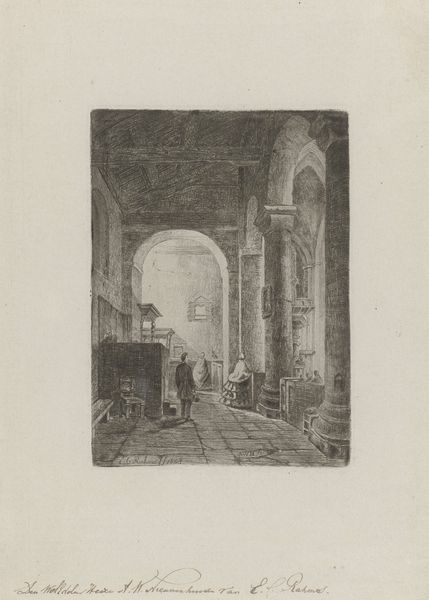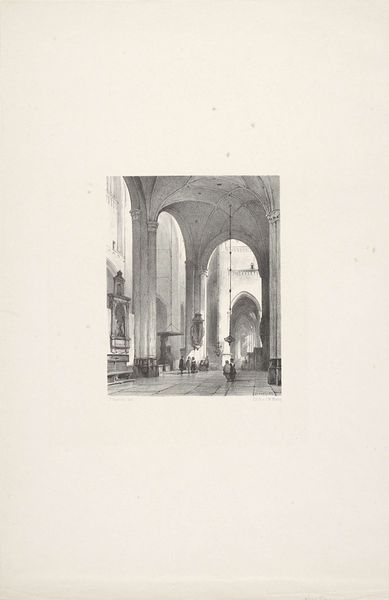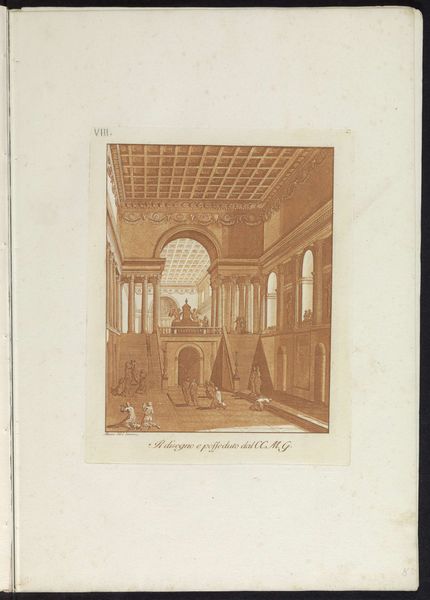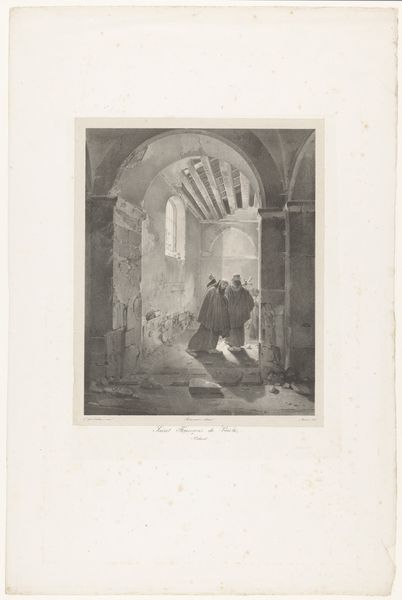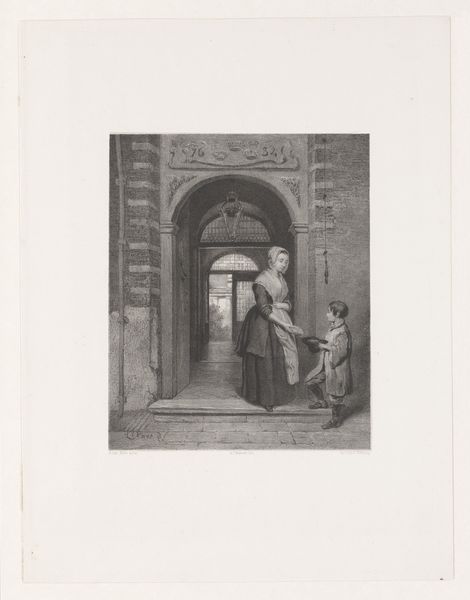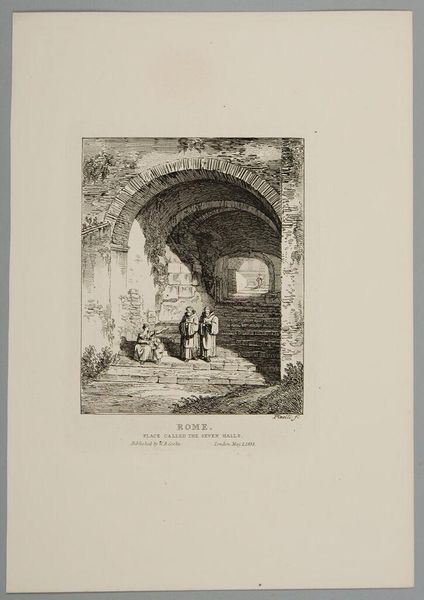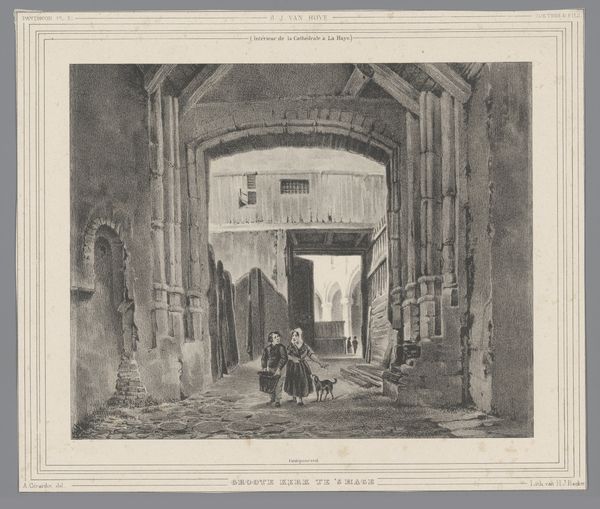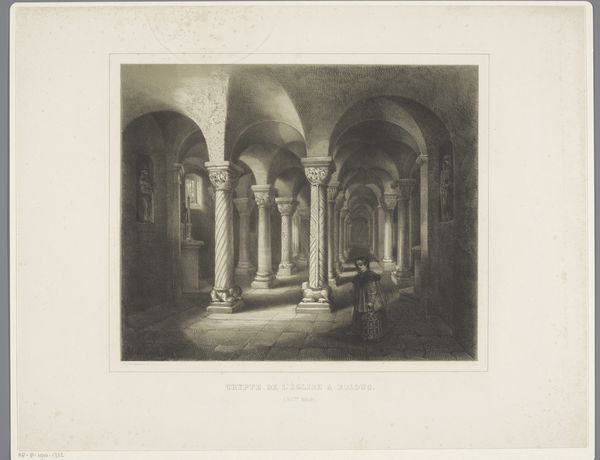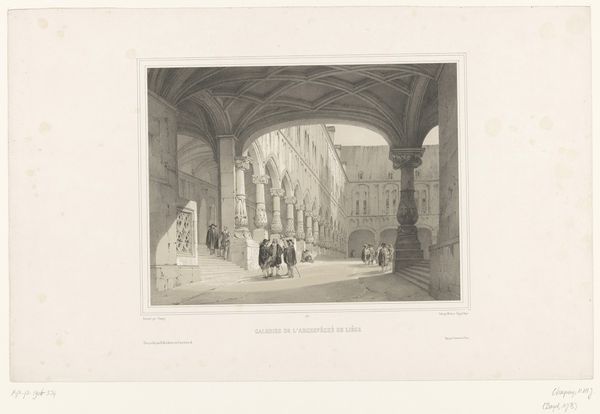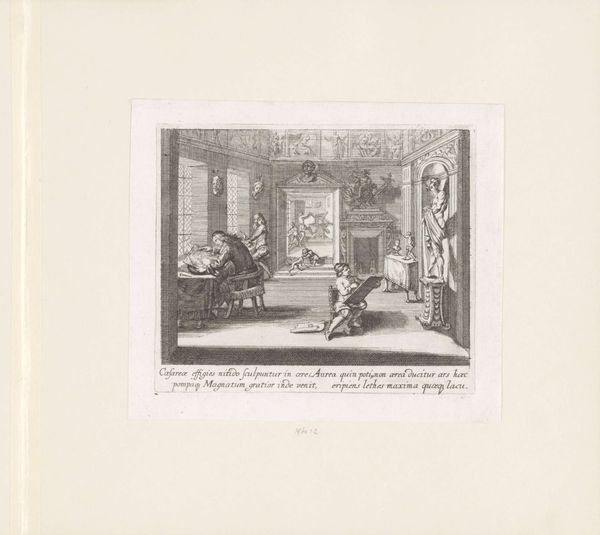
print, engraving
# print
#
old engraving style
#
landscape
#
classicism
#
arch
#
engraving
#
realism
Dimensions: height 243 mm, width 218 mm
Copyright: Rijks Museum: Open Domain
Curator: The piece before us, created in 1885 by Edouard Taurel, is titled "Muzikanten met doedelzak en fluit bij twee bogen" which translates to "Musicians with bagpipes and flute near two arches". Editor: It has such a shadowy quality; a sense of hushed observation permeates the space depicted in this print. It is old and detailed! Curator: It's true, there’s a remarkable play of light and shadow here, especially when we consider that this image comes to us through the laborious process of engraving. It speaks to the material constraints shaping the artist's vision. How can we consider labor involved and class inequities during that time? Editor: I agree completely. And this medium has a language. It carries so much information about not just subject and image but how that image came to be. Speaking of technique, note the strategic placement of the figures, these are working-class musicians that offer some insight into cultural power structures during that period, perhaps critiquing the elite. Curator: Yes, their inclusion disrupts what would have traditionally been an idealized portrayal of classical architecture. This is further complicated, considering how classical musical instruments were perceived at that time, so placing the Doedelzak in that scenery is fascinating, but do you think it makes them out of place in these surroundings? Editor: Not entirely, the arch is so powerful to look at, its repeated use conveys order and social hierarchy in which these musicians have to survive in. The medium feels so vital to understanding not just *what* we're seeing, but *how* we're meant to see it – it complicates those historical and gendered ideas on craft. The artists wanted people to analyze society. Curator: It does present a compelling tension between form and function, wouldn't you agree? But most especially the use of material in such a way brings more understanding in a gender context when the artist plays around with something commonly consumed such as the printing, or in today's context, the paper or image form itself! Editor: Precisely! This exploration invites dialogue, connecting our material reality with artistic intention. It challenges, ultimately, the way we understand artistic practices. Curator: And this perspective offers rich layers of interpretation, prompting us to re-evaluate notions of craftsmanship, social meaning and identity politics. Editor: Definitely; I see in that complexity something truly revolutionary – that expands well beyond its initial creation.
Comments
No comments
Be the first to comment and join the conversation on the ultimate creative platform.
